Isfahan
Places of Interest - Iran
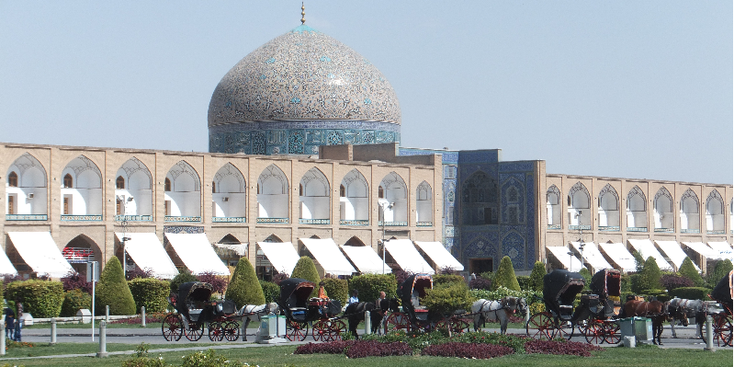

introduction
Isfahan is by far Iran’s main tourist attraction; a very interesting history in which the Netherlands also played a small role. The city has got some beautiful mosques, an impressive bazaar, an authentic Armenian quarter, ancient bridges and grotesque palaces. The city is not called the city of "half the world" for nothing. Here you can have a cup of “chai” (tea) in a traditional tea house among the locals, and/or being invited to join a local family on one of the hundreds of carpets spread out on the grass of the big the Imam Square.
Highlights remain a visit of the mosques around the square with her thousands of tiles, minarets, domes and small corridors. Something completely different could be a visit to the Armenian district Jolfa on the other side of the river - different churches and a cozy atmosphere with small coffee shops and restaurants.
The city also has a downside; It is here that one of the questioned nuclear facilities was built. Is this the city where a nuclear bomb will be developed which could endanger the whole Middle East and even worldwide? Isfahan is also a major industrial city with more than 1.5 million inhabitants - there is a low smog hanging above the city which causes (air) pollution which could cause some troubles on you’re throat. Nevertheless, a visit to this Persian peak can not be missed in a trip to Iran.
highlights

Imam square e.o .:
Meidan Emam or the Imam Square is Isfahan's main square and besides that is it the second largest square in the world. Around this square are the most eye-catching sights of the city. Perhaps the most important building around the square is the Imam mosque, arguably the most beautiful mosque in Iran and the world.
A large courtyard with four iwans (large facades on either side), lots of mosaic and tiles. Built in 1629 with a huge dome. Much smaller but no less beautiful is the Sheikh Lutfallah mosque that is not in us the moment. Never the less is it a masterpiece although it lacks a courtyard or place, no minaret and no portal. Right across from this mosque is the Ali Oapu palace.
Other well-known mosques are: Masjid-i-Sjah, which is covered with colorful tiles, and the Masjid-i-Sjeik-Lutfullah, a mosque with a famous blue dome. In the arcades around the square, which in the evening changed to a biggest picnic park ever seen, there are many shops leading to the big bazaar and the city - the main bazaar from the city. Like any bazaar you can buy a variety of items here - things that are perceived are the beautiful Persian carpets, the noga, the copper and the jewelry. UNESCO declared the square of Meidan Emam and the surrounding buildings a World Heritage site in 1979.

The south of Isfahan:
When you exit the main street Chahar Bagh Abbasi you will find yourself at the Si-o-se Pol bridge, one of the best known and most famous bridges in Isfahan. The river Zaindeh lacks often water but it remains a pleasure to walk around this area especially in the evening.
The bridges are in darkness lit up, and many Iranians are coming here to play sports, scuba diving or just picnics. Khaju bridge is probably the most beautiful of the city's bridges with its columns; If you look good, you'll see the stone seat where Shab Abbas II was on display to see the progress of the bridge.
In addition, the closeby Armenian district of New Julfa is also known. Sjah Abbas I moved about 3,000 Armenians to Isfahan to promote trade. They were free to have their own religion and built, among other things, the Vank, an Armenian cathedral. The church is fully painted with Christian art in the Renaissance style. The frescoes are breathtaking but also the neighborhood is cozy with small restaurants and coffee houses.
Other:
- The Sjah Hussein madrassa is a madrassa or Islamic school built in 1710;
-
The Jamemosque, a mosque built for five centuries, which gives a beautiful overview of Islamic architecture. This is Iran's largest prayer place.
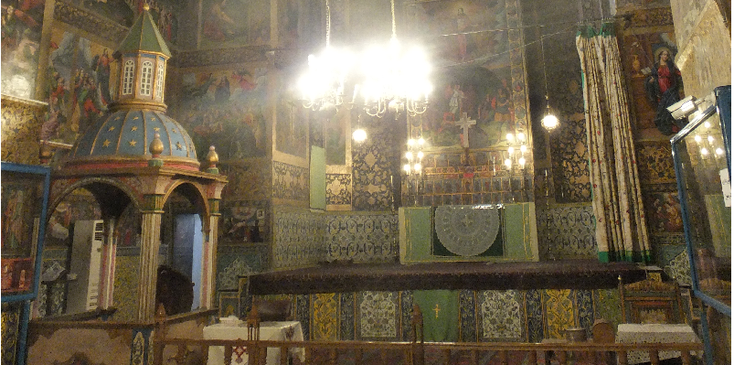
history

The city already existed in ancient times and was then known as Aspadana. Not much is known from the foundation of the city; It is well known that the city's fountain and pillars of the Shahrestan bridge have met the teeth of time. In the time of the Parthen, Isfahan was the capital of the province of Upper Persia.
During the Babylonian exile, Jews were also moved to Isfahan. Still, there is a small Jewish community in the city. The Arabs conquered the city in the year 643 and Isfahan retained an important function. The location on the “Silk” Road made the city famous for its silk and prosperity; hundreds of mosques and large houses were built within the city limits. Isfahan became the capital of Persia in the 11th century, at the time of the dynasty of the Seltsjuks.
In the thirteenth century the Mongols conquered the city and much of it was destroyed. In October or November 1387 Timor Lenk came to Isfahan. Because of the fear of the Asian leader, the governor of the city immediately capitulated. At night, however, the population rebelled on Timoers responding to the soldiers by killing the 70,000 inhabitants and destroying the city.
However, under the Safavids, in 1598, Isfahan became the capital of Persia again. The city came to bloom under Sha'h Abbas I the Great. During this period, the most important buildings were built, such as the Meidan Emam square. The population of the city then grew to about 1 million inhabitants. Abbas I moved many groups of traders to his new capital, including many Armenians and Jews who could confess their religion freely. The Persians then called themselves Nesf-e-Jahan, 'the half-world', meaning that if you saw it, you had seen half the world. The Dutch VOC had a trading post in Isfahan from 1623 to 1638.
The Safavid Sjah Abbas I the Great allowed several European countries in Iran to promote trade. The VOC opened its headquarters in the new capital of Isfahan in 1623. Pieter van den Broecke, the chief buyer and director of the Surprise Factorist, concluded an agreement with Shaja Abbas in which trade was regulated. This bloom period lasted until the Afghans conquered the city in 1722 and destroyed it almost completely. Shiraz became the capital of Persia. In 1729, the Afghans were expelled, but the city never got back its old status. Mashhad, Shiraz and later Tehran became the successive capitals of Iran.
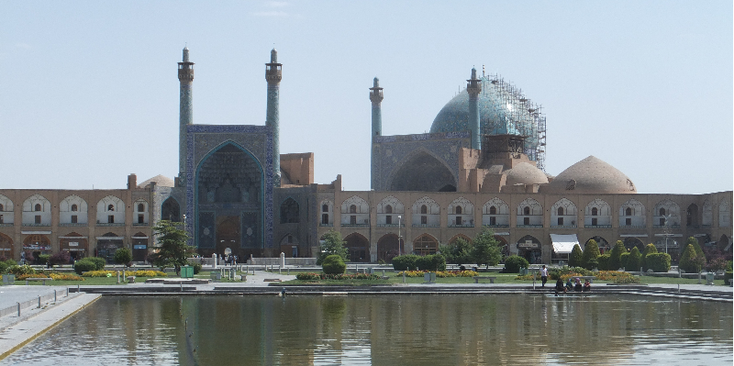
tips & advice (2014)

The main bus station is about 5 km north of the city center - Kaveh bus station; a very modern and large station with all the facilities you wish (as a tourist). To the east is the small terminal Jey and in the south the terminal called Soffeh. There are enough local buses through the main street Chahar Bagh Abbasi and cost about 10,000 Rials. Unfortunately there is no metro in Isfahan.
Isfahan - Shiraz: there are frequent buses from Isfahan to Shiraz from Kaveh station. But note: for the night bus you have to make a reservation because this is very popular especially with Asian and Western tourists. The bus will at least take place at 8:30 in the morning and arrive at Shiraz at 16:00. Costs are 140,000 Rials.

It's very hard to find a nice restaurant here - whether it's super-deluxe (with high prices) that you do not feel at home or it's a snackbar where many people sit close toe ach other and you're limited to order a pizza or hamburger. Just before the end of the main street Chahar Bagh Abbasi (just for the Kentucky House) are two or three reasonable restaurants.
There is an English menu and prices are good (around 150,000 Rials). In the Armenian district Jolfa I found a very nice tea and coffee house - cozy. Near the Vank church.
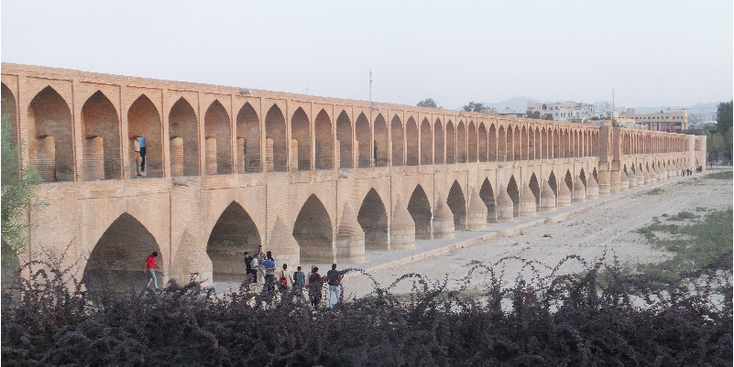

-
Name: Amir Kabir hostel
Address: Chahar Bagh Abbasi street
Price: 300,000 Rial (dormitory)
Phone nr. : 222 7273
Email: mrziaee@hotmail.com
Content:
Centrally located in the main street between the Jameh mosque, the bazaar and Imam square is this very popular backpackershostel. Not too clean, not too spacious but full of beds and tourists. There are different types of rooms around a small courtyard garden with some trees, an empty pond and some tables and chairs. A complimentary breakfast is served here.
The dormitory in which I slept was small, five regular beds head to head with a sink. Shower and toilet are on the other side of the courtyard - the shower is hot and perfect - the WCs could be a little cleaner. Great advantage is that the AC is on all day and there is a fridge. It is quite noisy because of the courtyard garden. There is WIFI (although it's often not too good) and you can arrange bustickets through the two brothers at reception.
I found the gentlemen to be honest a bit nonchalant - you have to figure out where everything is and how everything works. It will be time for some competition in this city.
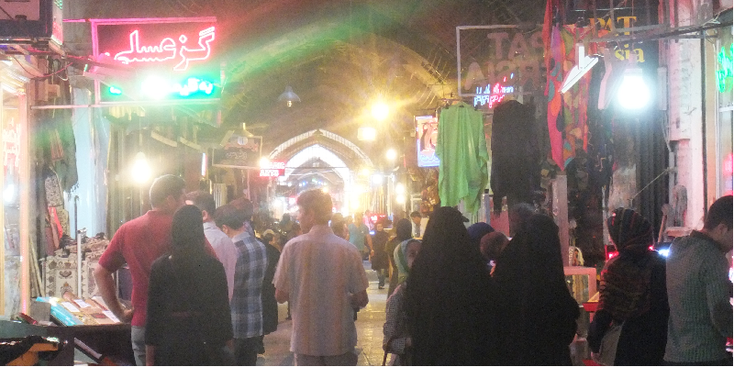
see also:
LANDEN:
EUROPA:
Albanië * België * Bosnië-Herzegovina * Bulgarije * Denemarken * Duitsland * Engeland * Estland * Finland * Frankrijk * Griekenland * Hongarije * (Noord) Ierland * Italië * Kosovo * Kroatië * Letland * Litouwen * Luxemburg * Macedonië * Malta * Montenegro * NEDERLAND * Oekraïne * Oostenrijk * Polen * Portugal * Roemenië * Rusland * Schotland * Servië * Slovenië * Slowakije * Spanje * Tsjechië * Turkije * Zweden
NOORD EN CENTRAAL-AMERIKA:
Chili * Costa Rica * Cuba * Guatemala * Mexico * Nicaragua * Panama * Verenigde Staten
ZUID-AMERIKA:
Argentinië * Bolivia * Brazilië * Colombia * Ecuador * Peru
AFRIKA:
Botswana * Burkina Faso * Egypte * Ethiopië * Ghana * Kenia * Mali * Marokko * Namibië * Oeganda * Senegal * Tanzania * Tunesië * Zuid-Afrika
MIDDEN-OOSTEN:
Iran * Israël * Jordanië * V.A.E.
AZIE:
Armenië * Cambodja * China * Filipijnen * Georgië * India * Indonesië * Japan * Kirgizië * Laos * Maleisië * Mongolië * Myanmar * Nepal * Oezbekistan * Singapore * Sri Lanka * Thailand * Vietnam
OCEANIE:
Voor meer reisfoto's kijk op www.instagram.com/cheapskatetravel.nl:
© Cheapskatetravel.nl; 2018 (all rights reserved)


